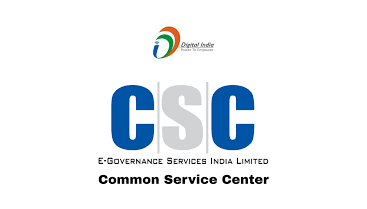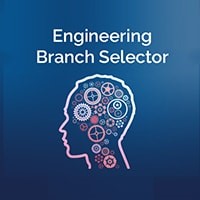CTS, expanded as the Cheque Truncation System revolutionizes the clearance process for cheques under the oversight of the Reserve Bank of India (RBI). Engineered for expediency, CTS accelerates cheque clearances by sidestepping the conventional reliance on physical cheque copies. Instead, this system leverages electronic images and pertinent cheque data, ushering in a new era of swifter and more efficient transactions…

Table of Content
- CSC full form: History of Common Service Centers
- CSC full form: Objectives of Common Service Centre Character.
- CSC full form: Services offered by Common Service Centres
- CSC Full Form: Structure of Common Service Centre
- CSC Full Form: Services offered by Common Service Centres
- CSC Full Form: Reason to set up the Common Service Centres
- CSC Full Form: FAQ’s about CSC
History of CTS (Cheque Truncation System)
The history of the Cheque Truncation System (CTS) can be traced back to the early 2000s when the Reserve Bank of India (RBI) recognized the need to modernize and expedite the traditional paper-based cheque-clearing process. The manual handling of physical cheques often led to delays, inefficiencies, and higher operational costs.
The concept of CTS was conceptualised to address these challenges and align with the global trend toward digital banking. In 2008, the pilot phase of CTS was initiated in the National Capital Region (NCR) of India, marking a significant milestone in the transition from physical to electronic cheque processing. The pilot’s success underscored the potential of CTS to enhance the speed, security, and accuracy of cheque clearances. Subsequently, the RBI mandated the implementation of CTS across major cities in India. The CTS framework aimed to replace the exchange of physical cheques between banks with the business of electronic cheque images, which streamlined the entire clearing and settlement process.
This shift not only expedited cheque processing but also significantly reduced the risks associated with physical handling, including loss, damage, and fraud. As technology continued to advance, the CTS framework evolved to accommodate newer innovations, security measures, and industry standards. The adoption of CTS Version 2.0 brought further enhancements to features like image quality and interoperability among banks.
Process Follow in CTS (Cheque Truncation System)
- To facilitate CTS processing, the presenting bank or its branch employs a scanner, core banking software, or compatible application. These tools adhere to the defined CTS standards, capturing both MICR band data and cheque images efficiently.
- End-to-end Public Key Infrastructure (PKI) has been implemented in CTS to ensure the security, safety, and non-repudiation of data and images.
- The presenting and paying banks use either the Clearing House Interface (CHI) or Data Exchange Module (DEM) to connect and transmit data and images to the Centralized Clearing House securely and safely to take part in the clearance procedure.
- The data is processed by the Clearing House, which then reaches the settlement and sends the necessary data and pictures to the paying banks. The term “presentation clearing” refers to this. The CCH sends the images and data to the paying banks for further processing via their CHI/DEM.
- The returning bank’s CHI/DEM also creates the return file if there are any unpaid instruments. During the return clearing session.
- Once the associated return-clearing sessions and presentation clearing have been successfully processed, the clearing cycle is deemed to be finished.
Benefits of CTS (Cheque Truncation System)
- aster transaction of cheques that saves time and money
- Rarer chances of transactional mistakes
- Checks are cleared more quickly than in the past
- No reports of misplaced checks
- Cross-state transactions are possible.
- Decreased the chances of fraud related to cheques
- It has taken off the burden from the banks.
- It minimizes the efforts involved in the manual movement of cheques.
- It enhances the operational efficiency of the banking system
- In contrast to conventional techniques, CTS enables consumers to get payments quickly and inexpensively.
How CTS help the Economy
The CTS system is implemented by all banks in India. The step aims on moving away from the paper-based system. The project will be a great addition to the Digital India initiative. Technology is gradually evolving. The CTS system has been successful in resolving logistic-related issues. It prevents the loss of instruments and data like physical transit. Since data is transferred electronically. It also brings down operational risk as fraud doesn’t happen.
CTS system is available at multiple clearing locations irrespective of banks. It is a nationwide system. The process brings uniformity and standardizes the system handling transactions. It utilizes MICR and watermarks for verification. The process is a game-changer for the banking sector in India. It will continue to grow till an alternative for cheques is implemented. Digital India is a novel scheme under the Government of India. CTS systems offer faster and more seamless transactions.
Reason to Set up the Common Service Center
The primary motivation for implementing the Common Service Center program was to eliminate the need for intermediaries. Establishment of collective industrial units aimed at eliminating society’s dependence on the middle class. In many ways, intermediaries have deceived citizens in the past. This G2C (government to citizen) service model ensures that benefits no longer go to the middle class. Instead, services are directly accessible to the general public, leading to complete transparency. Additionally, the policy addresses the issue of inadequate publicity of government work prices, which was often attributed to bribery and other forms of corruption.
As part of this plan, a dedicated Special Purpose Vehicle (SPV) was introduced to ensure efficiency and progressive development of e-government activities CSC e-Governance Services India Ltd. This SPV called, was formally incorporated under the provisions of the Companies Act 1956 on 16 July 2009. Its main objectives are to oversee the entire CSC system, ensure strict adherence to guidelines verification of completed activities…
Conclusion
The CTS system stands as a substantial boon in the contemporary economy, earning applause from enterprises and corporations for its rapid and effective money management capabilities. This system’s integration is a commendable augmentation to the broader Digital India initiative, aligning with the nation’s digital transformation endeavours.
The astutely crafted system, spearheaded by the Reserve Bank of India (RBI), fosters expeditious and seamless data processing. Notably, the meticulous checks implemented at each stage of the process substantially diminish the margin for errors, bolstering accuracy and reliability—a critical facet in financial transactions. Cheques have long held a prominent status in India’s payment landscape.
FAQs About CSC
CTS stands for Cheque Truncation System. It’s a digital clearing mechanism introduced by the Reserve Bank of India (RBI) to expedite cheque processing.
CTS replaces the physical movement of cheques with the exchange of electronic images and data. It captures the cheque image and relevant information at the bank of deposit, and the physical cheque is truncated, eliminating the need for its physical movement.
CTS was introduced to enhance the efficiency, security, and accuracy of cheque clearances. It aims to modernize the cheque processing system and align it with digital banking trends.
CTS reduces the time taken for cheque clearances, minimizes the risk of loss or damage to physical cheques, and enhances the accuracy of data processing. It also aligns with environmental conservation efforts by reducing paper usage.
Yes, CTS is aligned with the Digital India initiative as it involves the adoption of technology to streamline financial processes, contributing to the country’s digital transformation.



















